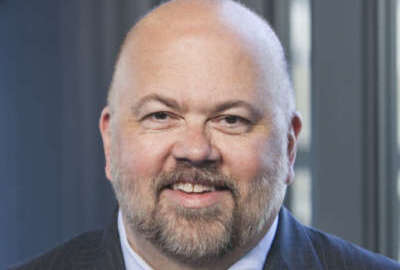
Presidential transition notebook: Take dismantling OPM off the table
Transition recommendations for the next administration are all offering value. They start a discussion, and, if we are lucky, might actually result in real reforms.
A recent report from the Senior Executives Association (SEA) and the consulting firm The Center for Organizational Excellence (COE) is one of the many such reports we will see before the presidential election. The National Academy of Public Administration, the Partnership for Public Service, the Heritage Foundation and many more organizations will weigh in on the actions the next administration should take. Like others in the federal human capital management space, I will participate in the development of some of those and offer my own ideas for reforms.
All of these organizations have a point of view. I will agree with some of their recommendations and disagree with others. Most of ideas we will see derive from a genuine interest in improving government operations. It is just that people have different views of what constitutes improvement. The SEA/COE report has some excellent ideas that I strongly support, along with a few that I would not agree with. I encourage readers to take a look at all of the recommendations various groups are making for the next Administration (whether it is Trump or Biden). In the SEA report, I am going to focus on their recommendations for the Office of Personnel Management (OPM), because OPM is an essential component to any civil service reform effort.
The report recommends “Reform the US Office of Personnel Management (OPM) into an efficient, effective, strategic, and credible governor of government-wide human capital that supports both mission-delivery and meeting the future needs of government.” I agree with that broad recommendation. When we get into details, some of my views differ. Here are three recommendations from the report that I believe are very sound, and some that I believe would not have good outcomes:
Streamline and Simplify the Personnel Regulations. Federal HR regulations are more complicated than they need to be. Job classification is a burdensome process, pay is even more complex. Hiring processes are so fragmented that agencies often do not use the authorities they already have. A thorough top to bottom scrub of HR regulations is essential as a starting point for real reform. In fact, much of what needs to be done to improve federal HR practices can be done without statutory reform. Accomplishing that will require OPM to reset its approach, with an eye toward giving agencies all of the flexibility the law allows. Too often OPM has been timid in its approach to reform, and too restrictive in its regulations and approvals.
Enhance the Capacity of the Chief Human Capital Officers Council. The CHCO Council has had its ups and downs since it was established by the Chief Human Capital Officers (CHCO) Act of 2002. At times, OPM and the CHCO Council have worked closely together, shared resources, and gotten things done. At other times, they have been like ships passing in the night. It is essential that the CHCOs and OPM work closely together. I would expand on this recommendation and designate the CHCO Council as a quasi-Board of Directors for OPM, with authority to set priorities for OPM policy development activities.
Establish the Office of Strategic Programs within OPM. OPM has lacked a strategic focus for many years. Individual leaders within the agency have attempted to provide that focus, but it is difficult to lead from the middle of the organization. The lack of strategic focus results in ad hoc policy development, disjointed programs, and a whole that is less than the sum of its parts. A Strategic Programs Office, working closely with a revitalized CHCO Council, could be far more effective in making use of the authorities already present in the law, and identifying areas where statutory changes are required. They could make better use of HR data, provide a business case for major initiatives, and identify the risks that endanger the success of human capital programs.
Reorganize OPM into four primary functional areas, make the director a term position for 5 – 8 years, and move the Merit System Accountability function under HR Programs. I understand the motivation behind wanting to tinker with the boxes in OPM, but OPM’s problems are caused by its culture and lack of funding and external support rather than its organization structure. In particular, I believe the recommendation to put policy and accountability in the same office within OPM creates an organizational conflict of interest that cannot be overcome. In order to maintain the integrity of OPM’s oversight functions, they cannot be paired with the policy functions in the same division. The idea of extending the 4-year term of the OPM Director is sound. I understand the motivation for having a term that could cross presidential administrations, but the truth is that the President can fire the OPM Director at any time, and a longer term will not change that. A more useful reform would be to convert the OPM Deputy Director position from a Senate-conformed political appointee to a career-reserved Senior Executive Service position and designating that job, by law, as the “first assistant” for purposes of the Vacancies Act. That would mean that when a vacancy occurs in the OPM Director position, the career deputy would act as Director.
Sunset Human Resources Solutions (HRS), fund OPM with appropriated dollars, move facilities management and procurement to GSA, reengineer Healthcare and Insurance if needed and determine if it should remain in OPM or be moved. Human Resources Solutions has been a controversial part of OPM following the National Performance Review during the Clinton Administration. OPM has to sell services to pay its bills. In some respects, that presents a conflict of interest. OPM write the rules, sells services, and provides oversight. There are, however, aspects of HRS that make sense for OPM to manage, and to charge fees for doing so. For example, OPM runs the outstanding Federal Executive Institute (FEI). FEI provides superb training for federal executives and charges a fee for their services. That makes sense and does not present any significant conflict of interest. OPM also offers services in organizational development that do not really present a conflict of interest and can be done on a fee basis. Other services OPM offers could present a conflict, and a thorough review should be conducted to identify those services and divest them. The facilities and procurement services make more sense to leave in OPM. It is an independent federal agency, so it should have the ability to manage its own support services and choose its own service providers. The last part of this set of recommendations concerns healthcare and insurance. OPM provides excellent services in these areas and the Federal Employees Health Benefits Program is a model for large scale health insurance programs. Their costs are reasonable. I have argued for many years that they represent some of the best programs in OPM. There is no reason to move them, consider moving them, or disrupt them in any way. Doing so runs the risk of breaking a part of OPM that is not broken. If we want OPM to evolve into a high performing organization, taking the best parts out and giving them away is not a good way to start.
The part of OPM that needed to go was the background investigations group. That move has happened. The need now is not divestiture, but rather a strong focus on rebuilding the culture of OPM, getting the agency on a sound financial footing, and restoring a focus on policy development and oversight.
I believe it is safe to say that virtually every good government group that looks at federal HR is going to say that OPM and overall human capital management need to be fixed. Where we will see divergence is in the fixes. Should the private sector do more? Should we simplify the merit system? Should we base federal pay on market forces? Should we use more contractors? Should we use fewer contractors? Should we rewrite the law? Or just the regulations? Or both? How do we make OPM more effective? Transition recommendations for the next administration are all offering value. They start a discussion, put ideas on the mix, and, if we are lucky, might actually result in some real reforms.
Jeff Neal authors the blog ChiefHRO.com and was previously the chief human capital officer at the Department of Homeland Security and the chief human resources officer at the Defense Logistics Agency.
Copyright © 2025 Federal News Network. All rights reserved. This website is not intended for users located within the European Economic Area.




